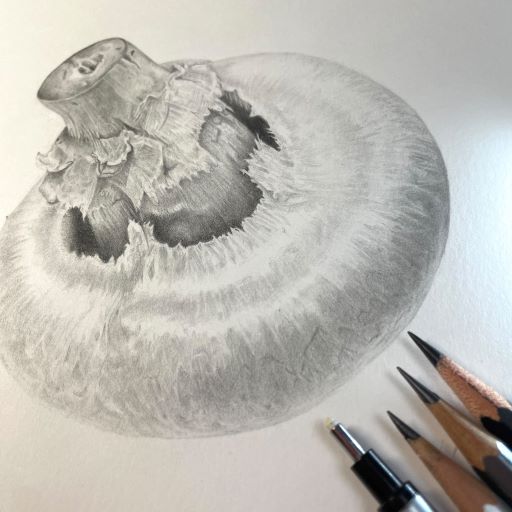Realism is at the very foundation of botanical art. Ours is an informative genre committed to scientific accuracy with a high degree of detail. Anything less and it’s not botanical art. It’s inescapable. And the fact that it has to be achieved working with the limitations of a two-dimensional surface, poses challenges.
Many artists come to botanical art from places other than a classical art training which means that there’s bound to be missing pieces in the realism puzzle to compound the challenges. But, fortunately, we have Leonardo da Vinci to turn to for a solution.
The conundrum of how to create a three-dimensional illusion of any subject on a flat surface drove him to understand how humans “see.” He delved deep into optics and wrote extensively—almost obsessively according to some experts—about his observations of how shadow held the secret to success in realism. And while it’s his focus on shadow I’m discussing here, that’s not to suggest that he ignored illumination and reflected light.
According to Walter Isaacson in his epic book, Leonardo da Vinci, Leonardo was the first to fully realize there is “between light and dark an infinite variation” and that the gradations are continuous and limitless. Furthermore, he noted that nothing in nature has precise boundaries defined in lines. His revelations “upended a tradition called disegno lineamentum” according to which precision in outline drawing (the source for any painting), was built on the use of lines. Leonardo, by contrast, insisted that natural boundaries were established by value changes and contrasts and not by defined or measurable lines. He insisted that measurable lines did not, and should not, exist. Through his own brilliantly realistic works displaying this core belief, the interpretation of realism was changed forever.
In scientific illustration, defined outlines are important but, in botanical art (regardless of the medium), the boundaries must “melt away” into value interpretation, as shown by Leonardo. The best way to learn how to do this well in botanical art is to first explore light and shadow on plant subjects in the way that the master painters of realism over the centuries learned how to do it. They honed their technique in continuous tonal ranges in the complete absence of colour first.
I accept that this may sound extreme to proponents of saturated colour, but it is the colour that gets in the way of learning the fundamentals of value range technique. This is precisely why I teach graphite drawing—to understand the value of colour in the portrayal of light and shadow.
To illustrate what I am talking about, I have prepared this piece of a supermarket-sourced stuffing mushroom. Very often, when I work in graphite, I wonder why I ever bother with colour. Graphite is soothing and alluring and promotes the joy of a heightened awareness of subtle nuances in highlight, shadows areas, outer edges, and inner edges defined by contrasts. It becomes instinctive and almost addictive completely without colour distraction. This is realism in the raw!
Before you dismiss this as the ramblings of a crazy person, give it a try. It’s a proven process. It’s not merely a nuisance and it’s not about taking a step back before stepping forward again in colour. Instead, see it as an exciting investment in your progression via an enhanced understanding of colour values regardless of your preferred medium.
This is an important topic which is why I’m including the interpretation of colour by understanding value in graphite in my e-booklets and workshops heading into 2023.

